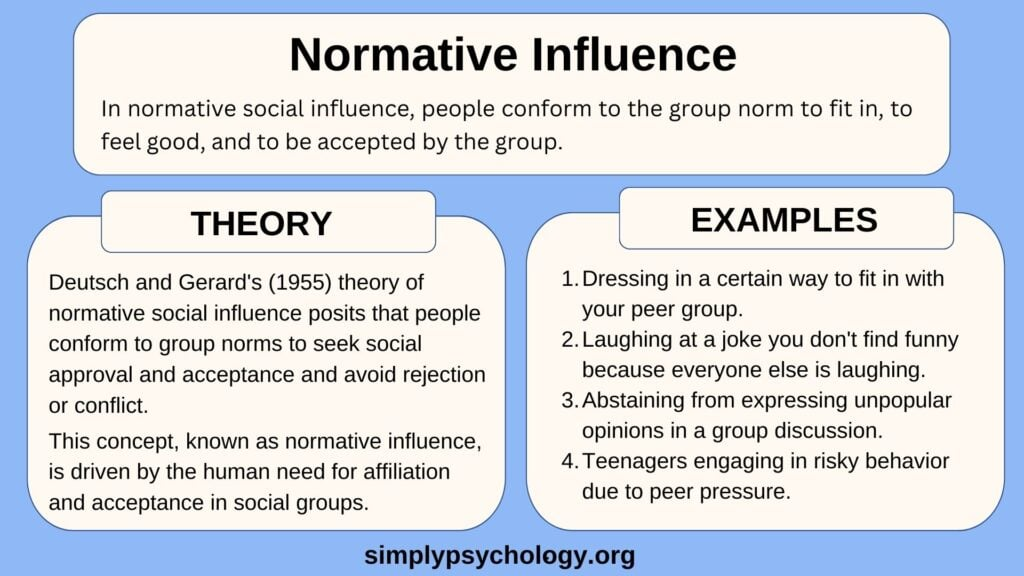The influence of social norms on preferences is a pivotal concept in understanding consumer behavior. Behavioral science reveals that our tastes and choices are often shaped by the social context in which we exist. From the music we cherish during our formative years to the brands we select when shopping, our personal preferences are not as individualistic as we believe; they are deeply intertwined with the attitudes and habits of those around us. For instance, the social norms surrounding popular products can draw us towards specific choices, creating a cycle that reinforces conformity. By examining how social norms and choices impact our buying decisions, we gain insightful perspectives into the underlying motivations that drive consumer behavior.
Social conventions play a crucial role in molding our likes and dislikes, revealing just how intertwined our choices are with the community around us. Often, the brand loyalty we exhibit is less about personal inclination and more a reflection of the standards embraced by our peers. Moreover, how we select products is frequently affected by the prevailing trends within our social circles. Within this framework, individual preferences can shift significantly, demonstrating that tastes are not solely driven by personal desires but are also products of social dynamics. Understanding this interplay of influences provides us with a deeper comprehension of consumer decisions and the factors that guide them.
The Role of Social Norms in Shaping Personal Preferences
Social norms play a crucial role in influencing personal preferences, impacting choices in everything from fashion to food. Behavioral science suggests that our decisions are not solely driven by individual desires but are significantly shaped by the preferences and expectations of those around us. For instance, when evaluating product choices, consumers often subconsciously align their selections with the tastes of their family, friends, or the wider community. This collective influence can lead to a phenomenon where individuals feel pressure to conform to popular opinions, thereby diminishing the authenticity of their choices.
Moreover, social norms create a framework within which consumers operate. When everyone around someone prefers certain brands or lifestyle choices, an individual is likely to gravitate toward those same options to feel accepted or to fit into a particular social circle. This phenomenon is particularly evident in urban settings, where local trends can dictate consumer behavior, often resulting in a herd mentality that affects various categories of products—from gourmet food to tech gadgets.
Consumer Behavior: How Preferences Evolve Over Time
Consumer behavior is not static; it evolves with shifts in personal experiences, societal trends, and technological advancements. Preferences often change as individuals encounter new information or engage with different groups, which is where the interaction of social norms becomes apparent. What was once a strong preference for a particular product can diminish as one is exposed to alternative brands or styles that are popular within their peer group. This fluidity highlights how personal preferences are often less about individual choice and more about adapting to social influences.
In exploring consumer behavior, it’s essential to understand how nostalgia and formative experiences shape preferences. For example, a person’s taste in music often reflects what they listened to during significant life stages, reinforcing a connection that is often social in nature. As new trends emerge, individuals might find themselves torn between their ingrained preferences and the pressure to adopt new styles dictated by peers or influencers, illustrating how social conditions can shift individual choices dramatically.
The Intersection of Identity and Preferences
Identity plays a pivotal role in shaping our preferences and behaviors as consumers. Today, the proliferation of social media platforms has amplified this connection, as individuals curate their online personas to reflect the brands they support and the values they endorse. The choices that consumers make are often influenced by how they wish to be perceived by others, suggesting that their preferences are not merely personal but are, in fact, a projection of their identities. This interplay between identity and preference can lead to a very curated consumption experience where individuals select products that align with their desired self-image.
Additionally, identity reinforces subcultures that form around specific interests or lifestyles, creating communities where preferences are shared and reinforced. For instance, environmental concerns might lead a group to favor sustainable brands, while others might prioritize luxury or status-based products. As a result, preferences are often less autonomous than they seem, being profoundly shaped by the desire to belong to certain groups and reflect shared values. This illustrates how deeply intertwined personal identity and social influence can be in dictating consumer behavior.
How Brands Manipulate Preferences Through Marketing Techniques
Brands increasingly leverage an understanding of social norms and consumer psychology to manipulate preferences through targeted marketing techniques. By analyzing consumer behavior, companies can tailor advertisements to resonate with specific demographics, effectively shaping preferences before individuals even recognize their influences. Whether it’s through celebrity endorsements that imply social proof or strategic placement of products in environments frequented by particular groups, marketing efforts are designed to create a perception that aligns with prevailing social norms.
Furthermore, contemporary advertising strategies often employ techniques that reinforce existing social pressures. For example, brands utilize social media to showcase influencers enjoying their products, triggering a desire within followers to conform to the same lifestyle. This not only cultivates a preference but also evokes an emotional association that can lead to increased brand loyalty. Hence, understanding the psychological underpinnings of consumer behavior has become vital for marketers aiming to effectively influence preferences in an increasingly competitive marketplace.
The Influence of Family on Consumer Choices
Family remains one of the most significant factors in shaping individual preferences and consumer choices. Behavioral science suggests that many of our early interactions with products, brands, and services are rooted in family habits. For example, if a child grows up eating a specific brand of cereal, that brand may become their go-to option later in life, regardless of availability or new alternatives. This generational transmission of preferences highlights how familial ties influence consumer behavior across various categories.
Moreover, the influence of family extends beyond mere product choices; it also frames our perceptions of quality and value. Children often adopt their parents’ opinions regarding what constitutes a high-quality product based on their upbringing. Thus, the interplay between familial preferences and personal choices underscores the essential role of socialization in forming consumer identities and behaviors. Recognizing this influence can provide brands with strategic insights on how to target potential customers effectively.
The Impact of Technology on Preference Development
Technological advancements have dramatically transformed the landscape of preference development, making it easier for consumers to discover new products and brands. With the rise of personalized marketing fueled by data analytics, companies can tailor recommendations to individual tastes, significantly shaping perceptions and choices. As algorithms strive to present options that align with consumer behavior, they effectively tailor preferences to match trending items or popular choices—sometimes even before the consumer is aware of it.
Additionally, technology enables greater access to diverse products and cultural influences than ever before. Social media platforms allow consumers to explore preferences outside of their immediate environments, leading to a broader understanding of what resonates with different communities. This exposure can simultaneously challenge traditional norms and reinforce them, creating a complex web of influences that shape individual preferences in dynamic ways. As technology continues to evolve, so too will the ways in which we form and understand our consumer choices.
The Relationship Between Attitudes and Choices
Understanding the relationship between attitudes and choices is fundamental in behavioral science, particularly in consumer behavior. While it is often assumed that attitudes directly drive product choices, this relationship can be more nuanced. Sometimes, the reverse is true, where choices can inform or alter one’s attitudes toward a product or brand. For instance, if someone chooses to try a new beverage based on peer recommendations, their positive experience can enhance their attitude toward that brand, leading to increased loyalty and preference.
Additionally, this reciprocal relationship suggests that marketers have a unique opportunity to shape consumer attitudes through strategic product placement and experience marketing. By creating positive experiences around their products, brands can foster favorable attitudes that may not have existed initially. Consequently, comprehension of this dynamic can empower businesses to craft more effective marketing strategies that manipulate both preferences and corresponding attitudes to boost consumer engagement.
Cultural Influences on Preference Formation
Cultural factors play a significant role in the formation of preferences, particularly concerning taste, aesthetics, and values that become ingrained in individuals from an early age. Cultural norms dictate acceptable behavior and curate choices within communities, influencing consumer behavior across categories. Understanding these cultural paradigms allows marketers to tailor their strategies to suit specific audiences while respecting cultural nuances that can impact consumer perceptions of authenticity and relevance.
As globalization continues to blend distinct cultural elements, individuals are exposed to a wider variety of influences affecting their preferences. For example, a young consumer in urban settings may incorporate trends from various cultures into their identity, leading to a hybridization of tastes that blurs traditional boundaries. This evolution illustrates that consumer preferences are not only personal but also deeply interwoven with the prevailing cultural narratives that shape communal tastes and behaviors.
Switching Costs: Why We Stick to Our Preferences
Switching costs represent a critical factor in understanding why some consumers remain loyal to their existing preferences, even when alternatives may be more appealing. Behavioral economics reveals that the perceived difficulty of changing preferences can discourage individuals from exploring new options. For example, switching from a longstanding brand of laundry detergent to a new eco-friendly alternative may involve reassessing what one has always used, thereby causing anxiety about the outcomes. Consequently, consumers are likely to stick with the familiar rather than risk the uncertainty that comes with change.
Moreover, the concept of switching costs extends beyond products to the brand loyalty that develops over time. Consumers who have invested in a particular brand—be it through repeat purchases, emotional attachment, or social validation—often experience high costs when contemplating a shift. This loyalty can create a protective barrier around their preferences, making it challenging for new brands to penetrate established consumer habits. Therefore, marketers must navigate this landscape with strategic initiatives designed to lower perceived switching costs, making alternatives more appealing to hesitant consumers.
Frequently Asked Questions
How do social norms influence personal preferences in consumer behavior?
Social norms significantly shape personal preferences in consumer behavior by guiding individuals on what is deemed acceptable or desirable within their social circles. For instance, people often choose products or brands that are popular among their friends or community, as these choices reinforce their identity and adherence to the group’s values. This influence can manifest in various categories, from fashion to dining, indicating that our choices are frequently aligned with those around us.
In what ways do social norms and choices impact product choices in today’s market?
Social norms and choices impact product choices by creating trends that consumers feel compelled to follow. For example, marketing campaigns often tap into current social norms by showcasing products in contexts that resonate with consumers’ social identities. This can lead to a bandwagon effect, where individuals adopt preferences based on what is popular or widely accepted, rather than solely on personal tastes or rational evaluations.
What role does behavioral science play in understanding the influence of social norms on preferences?
Behavioral science provides insights into how social norms influence preferences by examining the psychological factors behind decision-making. Researchers analyze how individuals form preferences based on social cues, peer behavior, and cultural expectations. This field helps explain why consumers may prioritize products favored by their social groups, even when personal preferences might suggest otherwise.
Can personal preferences change due to the influence of social norms?
Yes, personal preferences can change due to the influence of social norms. As social circles evolve and new trends emerge, individuals may adapt their preferences to align with the prevailing tastes of their peers. This fluidity can lead to a dynamic relationship between personal choices and social expectations, showing how external influences play a crucial role in shaping our likes and dislikes.
What examples illustrate the influence of social norms on product choices?
Examples of social norms influencing product choices include the popularity of certain fashion brands within youth cultures or the rise of veganism in communities focused on sustainability. In these cases, individuals may choose products that reflect the prevailing attitudes and behaviors within their social networks, illustrating how preferences are often less about individual taste and more about conforming to group norms.
How do social media platforms affect consumer behavior related to social norms and personal preferences?
Social media platforms amplify the influence of social norms on consumer behavior by providing constant exposure to friends’ and influencers’ preferences. As individuals curate their digital identities, they often align their buying habits with popular trends showcased online, leading to a stronger correlation between social validation and personal choices. This phenomenon underscores the power of social norms in shaping consumer preferences in the digital age.
What is the connection between switching costs and social norms in shaping product preferences?
The connection between switching costs and social norms in shaping product preferences lies in the ease or difficulty of changing choices. Social norms often create a sense of loyalty to certain brands or products, making it harder for individuals to switch due to fear of judgment or social alienation. Consequently, even when presented with better alternatives, consumers may stick with familiar choices that align with their social group.
How can marketers leverage social norms to influence consumer preferences effectively?
Marketers can leverage social norms to influence consumer preferences by crafting messages and campaigns that highlight the popularity or acceptance of their products within target demographics. By showcasing testimonials from respected figures or peer validation, marketers can create a sense of belonging and desirability that encourages consumers to adopt those preferences, thereby aligning their choices with social expectations.
| Key Point | Description |
|---|---|
| Influence of Social Norms | Social norms shape individual preferences significantly, often unconsciously leading people to favor products associated with their parents or local communities. |
| Formation of Preferences | Preferences are developed over time, often influenced by life stages; for example, music preferences solidify during teenage years, while choices for other products emerge later. |
| Perception of Choice | Individuals often believe they choose products based on their personal attitudes, yet many times, consumer choices shape their attitudes post-purchase. |
| Marketing Influence | The rise of personalized marketing reflects how companies utilize data to target consumer preferences, often skewing perception of authentic choice. |
| Changing Preferences | Switching costs play a crucial role in how easily consumers can change their preferences—some preferences are easier to switch than others, impacting brand loyalty. |
| Cultural Trends | Social circles and trends impact collective preferences; people often select brands influenced by their peers, while some trends become globally recognized. |
Summary
The influence of social norms on preferences plays a pivotal role in shaping the way we select products and form tastes. This dynamic means that our likes and dislikes are often a reflection of societal cues rather than purely personal choices. From music to brand loyalty, our preferences are significantly affected by our environment, social circles, and marketing strategies, emphasizing the interconnectedness of individual choices and collective trends. Understanding this influence can help individuals navigate their consumer behavior more consciously, recognizing the external factors that shape their preferences.




